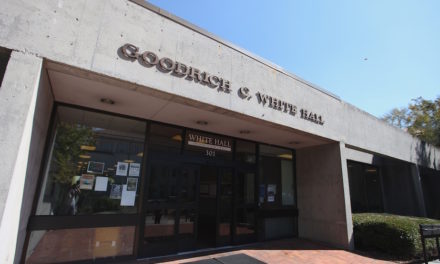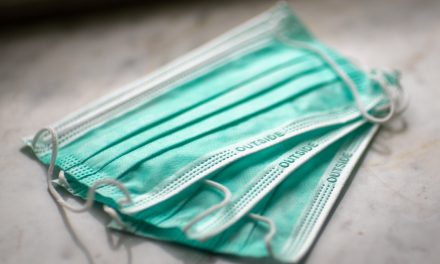As the first Black student admitted to the Emory School of Medicine, Hamilton Earl Holmes (67M) is a trailblazing figure in Emory history.
Hamilton Holmes, nicknamed “Hamp,” was born on July 8, 1941 in Atlanta. Hamilton grew up in a renowned family within the civil rights community. A “third-generation integrationist,” Hamilton succeeded his grandfather and father who successfully filed suit in 1955 to desegregate Atlanta’s public golf courses.
Hamilton attended Henry McNeal Turner High School, the most prestigious public high school for Black students in Atlanta at the time. He excelled at Turner, balancing his esteemed scholastic record and athletic accomplishments as senior class president and co-captain of the football team. Hamilton graduated as valedictorian from Turner in 1959.
His success at Turner attracted the attention of Jesse Hill, a member of the Atlanta NAACP education committee, who recruited Black students to desegregate Georgia higher-education institutions. Hill suggested that Hamilton and Charlayne Hunter, a fellow Turner graduate, apply to the University of Georgia (UGA), an institution then-Governor Ernest Vandiver famously vowed no Black student would attend.
UGA rejected both Hamilton’s and Hunter’s fall 1959 applications, citing “space shortage,” but the NAACP persisted. Following a two-and-a-half-year legal battle, federal judge William Bootle ruled in favor of the students on Jan. 6, 1961, arguing that Hamilton and Hunter were “fully qualified for immediate admission” and “would have already been admitted had it not been for their race and color.” Consequently, UGA admitted the first two Black students in its 175-year history.
Hamilton transferred from Morehouse College (Ga.) to UGA in 1961 and was met with burning crosses, a hanging black effigy named “Hamilton Holmes” and a student-organized riot. Braving racial hostility, Hamilton still excelled scholastically, graduating Phi Beta Kappa in 1963.
Like UGA, Hamilton’s admission to the Emory School of Medicine as a student of color required legal action. This time, Emory led the charge against state-sanctioned segregation in higher education.
Two Emory administrators sued Georgia in 1961 to overturn a discriminatory state tax statute that would have revoked Emory’s tax-exemption status if it admitted students of color. The Georgia Supreme Court ruled in favor of Emory in 1962, and Hamilton became the first Black student admitted to the Emory School of Medicine the following year.
Marilyn Holmes described her late husband’s experience at the Emory School of Medicine as drastically different from his experience at UGA in a 2015 interview with Woodruff Health Sciences Center Historian Sally Wolff-King. Hamilton’s decision to pursue medical school at Emory was an easy one, she said.
“There were no restrictions imposed on him,” Marilyn said in 2015. “The faculty welcomed him with open arms. He made a lot of friends in medical school.”
After his first year in medical school, Hamilton worked for the SmithKline Beecham pharmaceutical firm in Philadelphia. While living in the city for the summer, Hamilton met Marilyn Vincent, his future wife of 30 years.
“I was there for my sorority convention and he was invited to be an escort for some of the social events,” Marilyn told the Wheel. “We met at one of those events on Monday night and fell in love, and on Thursday he proposed and I accepted.”
After Marilyn graduated from Wayne State University in Detroit, they married in 1965. That summer, she moved to Atlanta as a “new teacher and a new bride” while her husband completed medical school.
Following his graduation from Emory in 1967, Hamilton pursued a general surgical residency at Detroit General Hospital, but was drafted by the military in 1969 to serve in Germany. In Nuremberg, Hamilton completed an unofficial training residency at a military hospital where he gained valuable hands-on experience.
Hamilton decided to finish his residency at Emory upon his return to the country in 1973. Chair of Orthopaedics at Emory Thomas Whitesides interviewed Hamilton for the residency and hired him on the spot.
Honored to teach and work alongside a “true pioneer of the highest quality, honesty and capability,” Whitesides expressed reverence for Hamilton, noting, “My relationship to him was professional to start with, but then it was family.”
When Hamilton finished his residency at Emory in 1976, he joined the Emory Clinic Staff, serving as an assistant professor of the Orthopaedic Division of the Department of Surgery.
Robert P. Kelly Professor and Chair of the Orthopaedics Department James Roberson trained as a surgical orthopaedic resident under Hamilton during his early years as a faculty member.
“He was certainly a role model for me,” Roberson remarked. “He was a hardworking surgeon who was very focused on patient outcomes and delivering good care to patients.”
In following years, Hamilton led a distinguished career in medicine; he became the chief of orthopaedics at the Veterans Administration Hospital, now the Atlanta VA Medical Center, and later opened a private practice. From 1989 to 1995, he served as medical director at Grady Memorial Hospital until he became chief of orthopaedics at Grady and associate dean at Emory’s School of Medicine.
Executive Associate Dean of Medical Education and Student Affairs John Eley was a student and resident of Hamilton while he served as Grady’s medical director. While Hamilton broke multiple educational race barriers, Eley noted that he remained humble.
“He didn’t act like a hero,” Hamilton said. “He acted like a heck of a good doctor who had really high standards for the profession in mind.”
While the hours were long and the work was arduous, Marilyn remarked that in his pursuit to be “the best orthopedic surgeon that he could be,” Hamilton never failed to support his family as a loving father and husband.
“He’d leave the morning of one day and we wouldn’t see him again until the night of the second day,” Marilyn explained. “So he knew that it was hard on all of us, but he tried to let us know that we were a valuable part of his life.”
After Hamilton suffered a hypertensive stroke, Whitesides took care of him in the hospital. Two weeks after quadruple bypass surgery, Hamilton passed away on Oct. 26, 1995 at age 54 in his Atlanta home.
Hamilton’s legacy lives on through his family, professional accomplishments and the integration of Georgia higher education. In his honor, the University established the annual Hamilton E. Holmes memorial lecture series and erected a first-year dorm in his name in 2012.
Nicknamed a “walking hello” by his children, Hamilton is remembered by loved ones for his congeniality, stopping to speak with everyone “from the top offices to the custodial staff.”
“He was a trailblazing person, and it makes a difference to stop and pause and reflect and think about what we are doing,” Eley said. “To make the world a better place, because that’s what doctors are trying to do. And Hamilton showed us how.”






While his name is John William Eley (Executive Associate Dean of Medical Education and Student Affairs) he is “known by” Bill Eley. Minor point to an excellent article.
Doug Lazenby (Emory college 1981, EUSM 1985)
Such a humble person